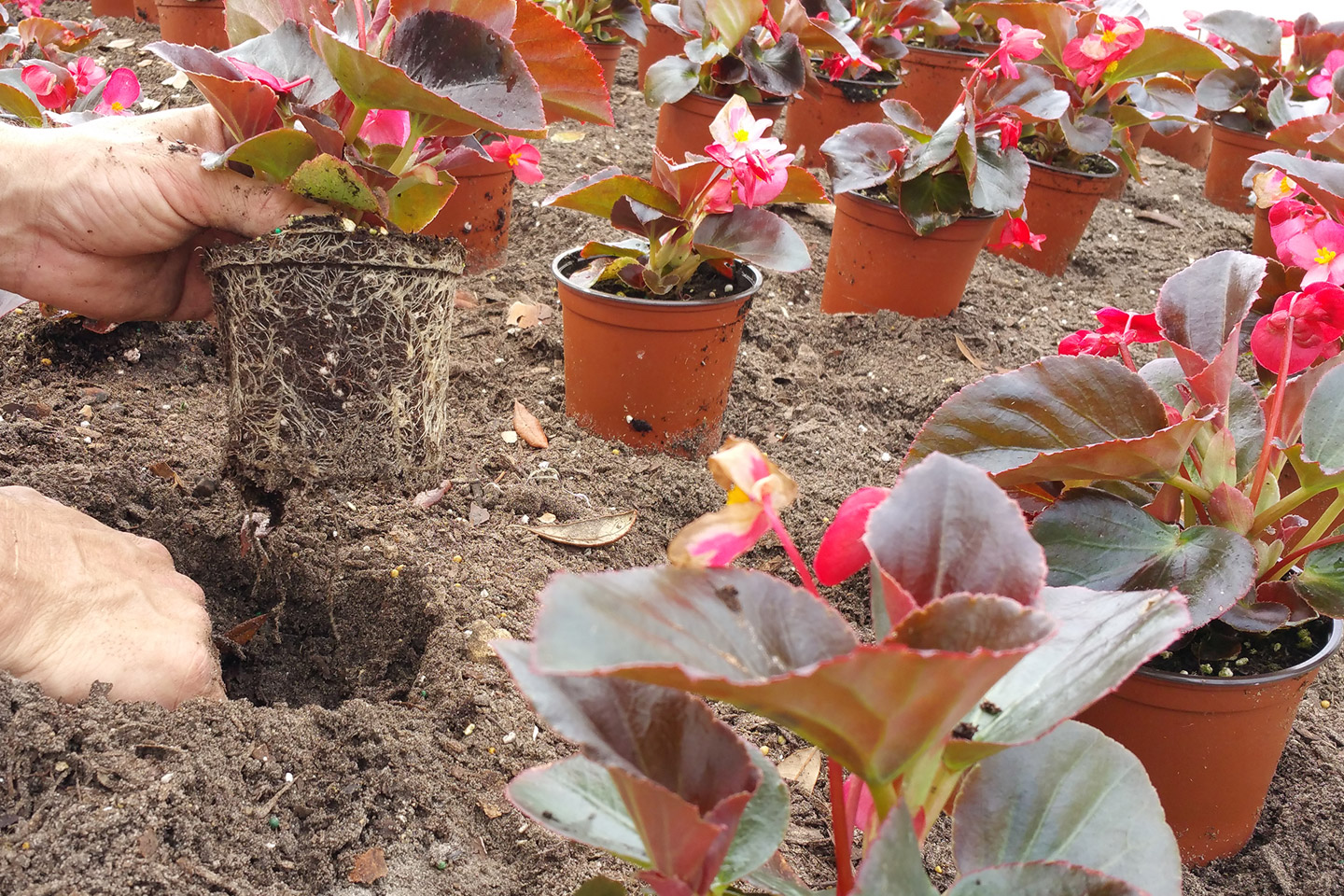Caring for Your Landscape After Hurricane Floodwaters: Fresh and Saltwater Challenges - Sit Down with CEPRA
Hurricanes can leave behind a trail of destruction by bringing devastating floodwaters, and the type of floodwater - fresh or salt - can significantly impact the landscapes recovery process. Freshwater floods can cause saturation, erosion and promote disease, while saltwater floods can introduce high salinity levels, affecting the health of both plants and soil.
Many ornamental shrubs, trees, palms and turf grasses are not tolerant of standing water especially when the floodwater is brackish or salty. Under flood conditions the plant's roots are unable to get oxygen, and they will basically suffocate from these conditions. Some can tolerate long-term flooding up to a week or so, while others will become damaged in a short time. Symptoms of decline can range from:
- Leaf discoloration, browning or drop.
- Droopy foliage, stem and leaf wilt.
- Stem and branch dieback.
- Plant death.
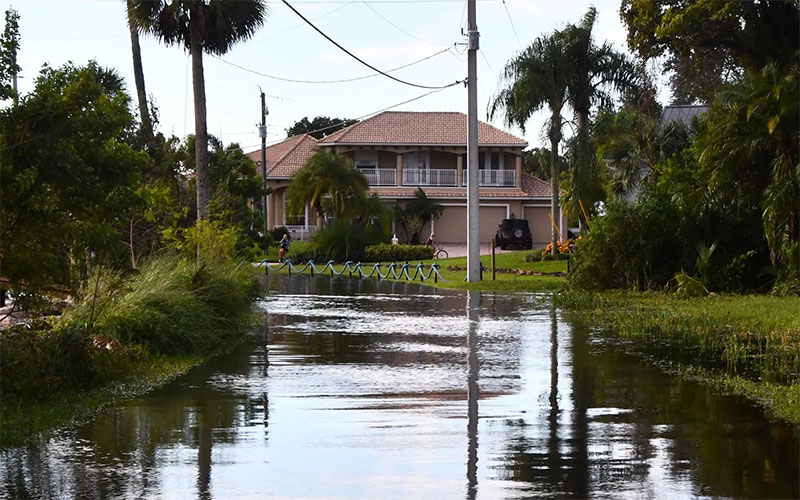
Flood effects.
Initial Assessment
Damage Survey: Conduct a thorough assessment of the landscape. Identify areas with standing water, eroded soil and damaged plants. Document the extent of water damage this documentation is crucial for insurance claims and for planning restoration efforts.
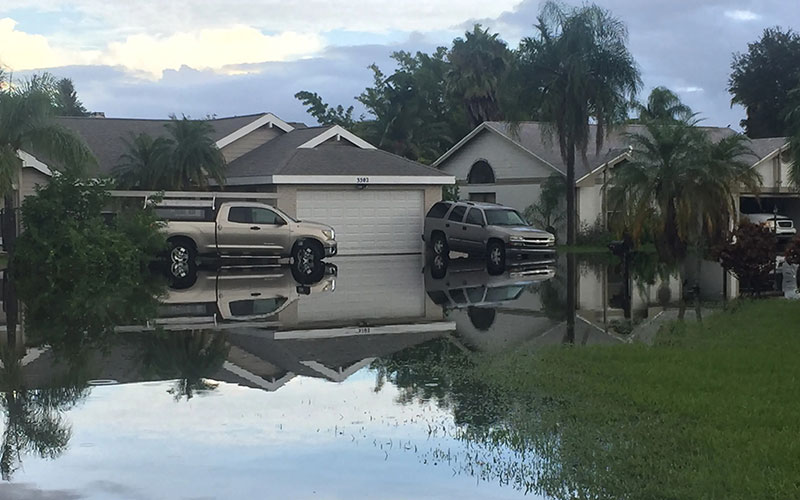
Manatee County flooding.
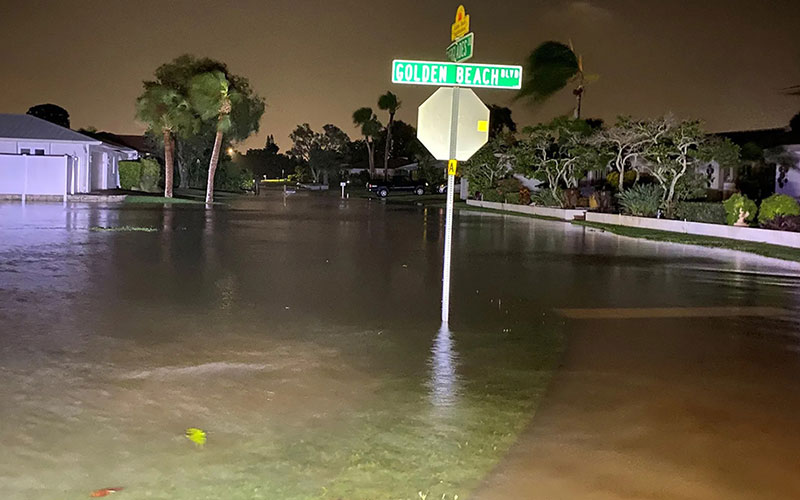
Venice flooding.
Managing Freshwater Flood Damage
Drainage and Aeration: Remove standing water quickly to prevent prolonged soil saturation. Use pumps or dig temporary channels to facilitate drainage. Once the water recedes, aerate the soil to enhance oxygen flow and to expedite drying.
Soil Testing and Amendments: Test the soil for nutrient levels and pH balance. Floodwater can leach essential nutrients from the soil. Based on test results, amend the soil as needed with organic matter, compost, and fertilizers to restore productiveness.
Plant Care: Freshwater floods can cause root rot and other diseases. Inspect plants for signs of damage. Remove dead or heavily damaged plants and prune affected parts of salvageable ones. Replant with flood-tolerant species to enhance resilience against future floods.
Managing Saltwater Flood Damage
Salt Removal: If possible, you will want to flush the soil with fresh water to wash away the salt. Irrigation and post Hurricane rains may provide this for you, but not always.
Soil Testing and Remediation: Saltwater floods leave behind high salinity levels, which are detrimental to most plants. Test the soil specifically for salinity levels. Amend the soil with gypsum, which can help displace sodium ions and improve soil structure. Organic matter, such as compost, can also aid in restoring soil health.
Plant Selection and Care: Salt-tolerant plants are essential in areas prone to saltwater flooding. Remove plants that show severe salt damage and replace them with species that can withstand higher salinity levels. Examples include Coontie, Oleander, Muhly Grass, Pineapple Guava, Plumeria, Live Oak & Wax Myrtle.
Infrastructure Repair
Irrigation Systems: Check irrigation systems for blockages or damage and ensure they are functioning correctly to support the recovery of the landscape.
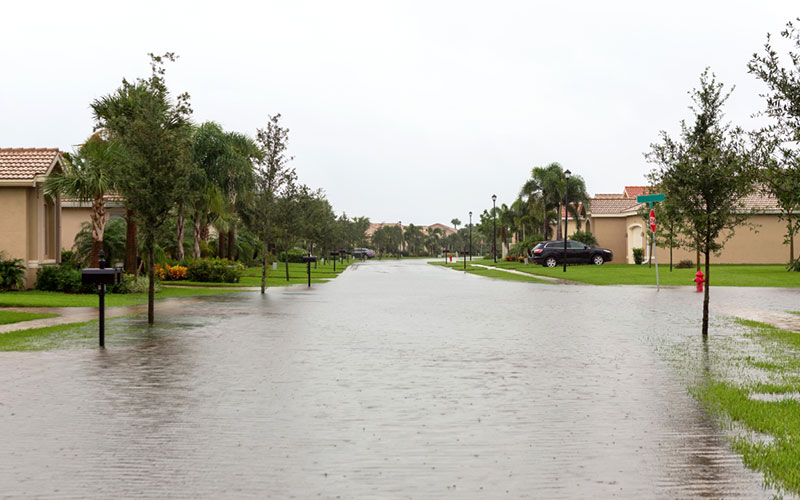
Flooded landscape.
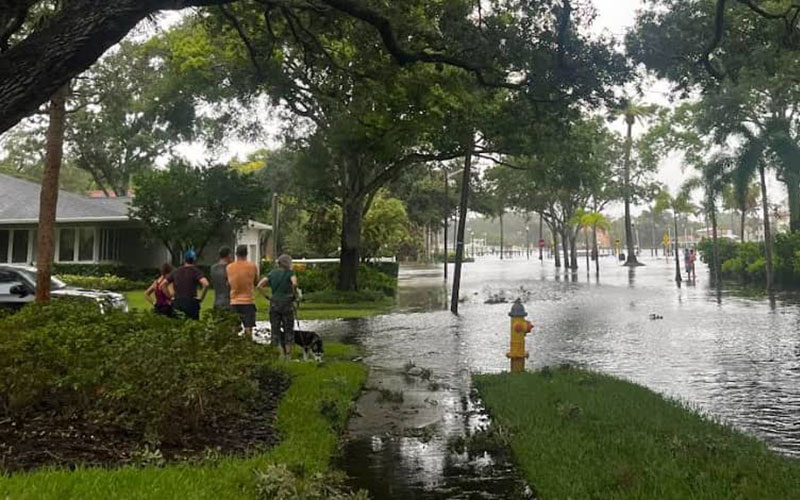
Flooding.
Long-term Recovery and Maintenance
Erosion Control: Implement erosion control measures such as planting ground covers, installing erosion control blankets, and constructing terraces or swales. These steps help stabilize the soil and prevent future erosion.
Rain Gardens and Bioswales: Consider creating rain gardens and bioswales to manage stormwater naturally. These features absorb excess water, filter pollutants, and reduce runoff, contributing to a healthier landscape.
Professional Assistance: Don't hesitate to seek help from landscape professionals and your local extension services. They can provide valuable expertise and resources tailored to your specific situation.
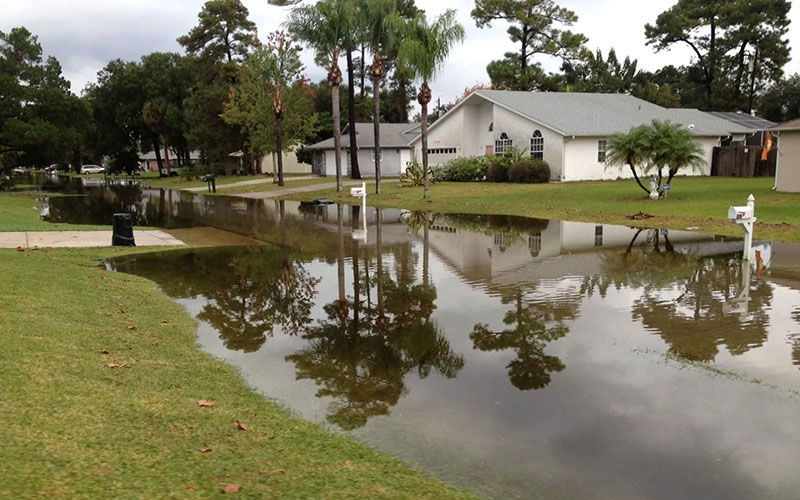
Flood waters in neighborhood.

After flood waters recede.
Conclusion
Recovering a landscape after exposure to hurricane floodwaters, whether fresh or salt, requires a thoughtful and systematic approach. Immediate actions like drainage and soil testing, coupled with long-term strategies for erosion control and plant selection, are crucial for successful recovery. By understanding the unique challenges posed by different types of floodwaters and implementing effective care practices, you can restore your landscape to its former beauty and health, building resilience against future storms.
